Spider Plants (Chlorophytum comosum), or also known as Airplane Plant or Ribbon Plant, are beautiful indoor plants that lose its solid green leaves when not taken care of.
Brown leaf tip burns are one of the most common issues with Spider Plants.
They can be caused by a variety of issues—it can be environmental, such as the amount of light and humidity, or have to do with proper care, such as proper watering and fertilization.
- Related article: Spider Plant Growing Conditions
In this article, we will talk about the most common reasons for browning tips and provide easy solutions for each one!
1. Too Much Direct Sunlight
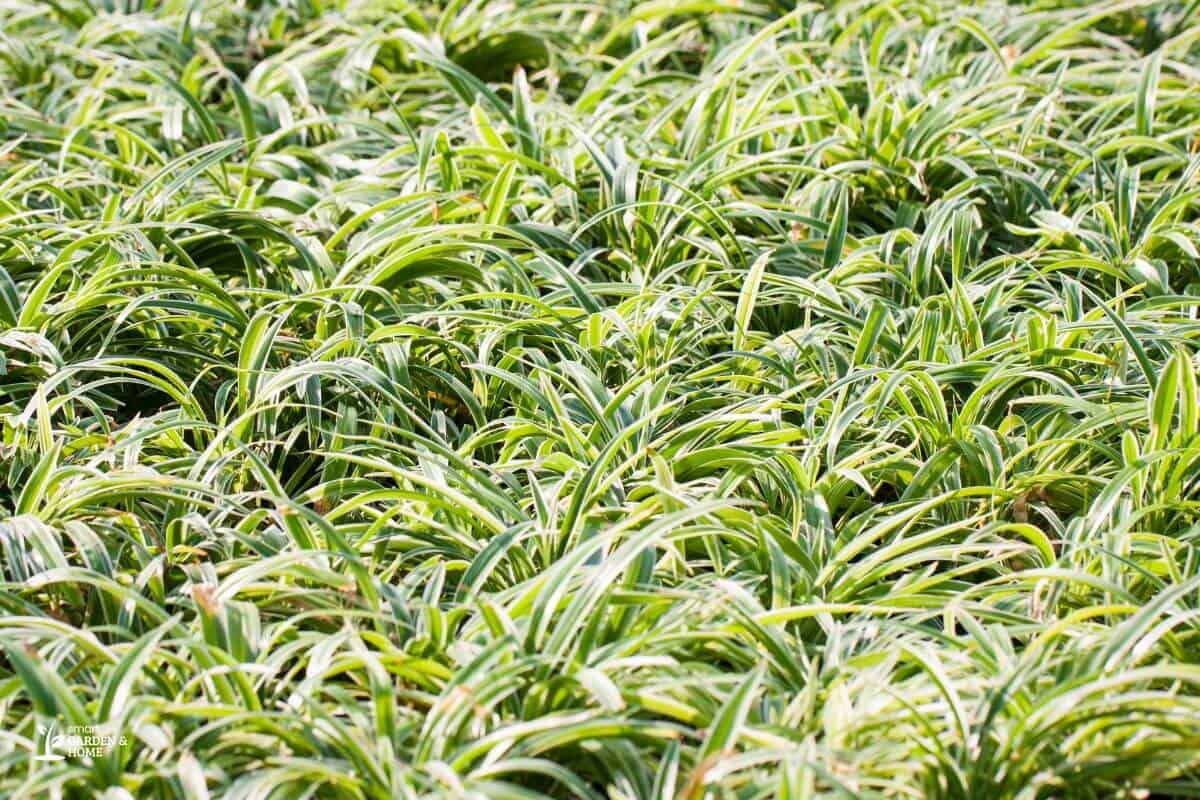
Spider Plants need to receive just the right amount of light or their leaves will burn.
To avoid your Spider Plant leaves from fading in color and developing brown tips, keep it in bright, indirect light.
Ideally, it’s best not to place Spider Plants next to a south- or east-facing window or in a very bright room.
This problem is easy to solve as you only need to find a place in your house where your plant is exposed to plenty of indirect or filtered light. The best is next to a north- or west-facing window.
When outside, Spider Plants should be kept in the shade with moderate light.
2. Not Enough Humidity
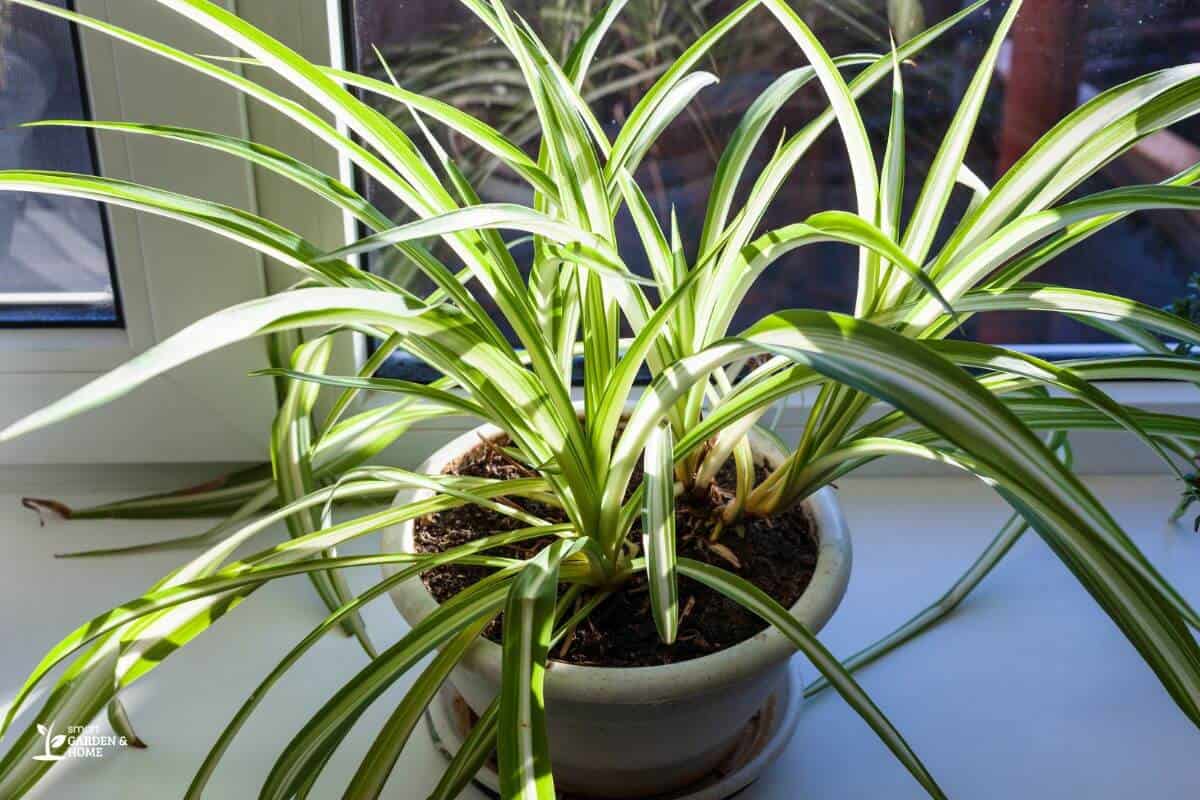
Spider Plants are native to the tropics where the conditions are very humid.
Excessive dryness in the air inside homes can cause the development of brown tips, which tend to be more prevalent during the winter season due to the use of central heating systems.
If you suspect that your plant is suffering from a lack of humidity levels, consider placing it in a room like a kitchen or bathroom where steam can create a more suitable environment for its specific species.
Also, avoid keeping Spider Plants right next to a radiator, and consider using a humidity tray.
This is a shallow tray with pebbles and a little water that can be placed under your plant.
It works by ensuring that the soil doesn’t get in direct contact with the water which evaporates slowly, increasing the humidity around the plant.
Alternatively, you can do daily misting for the plant’s leaves or group more plants together.
3. Too Little Water
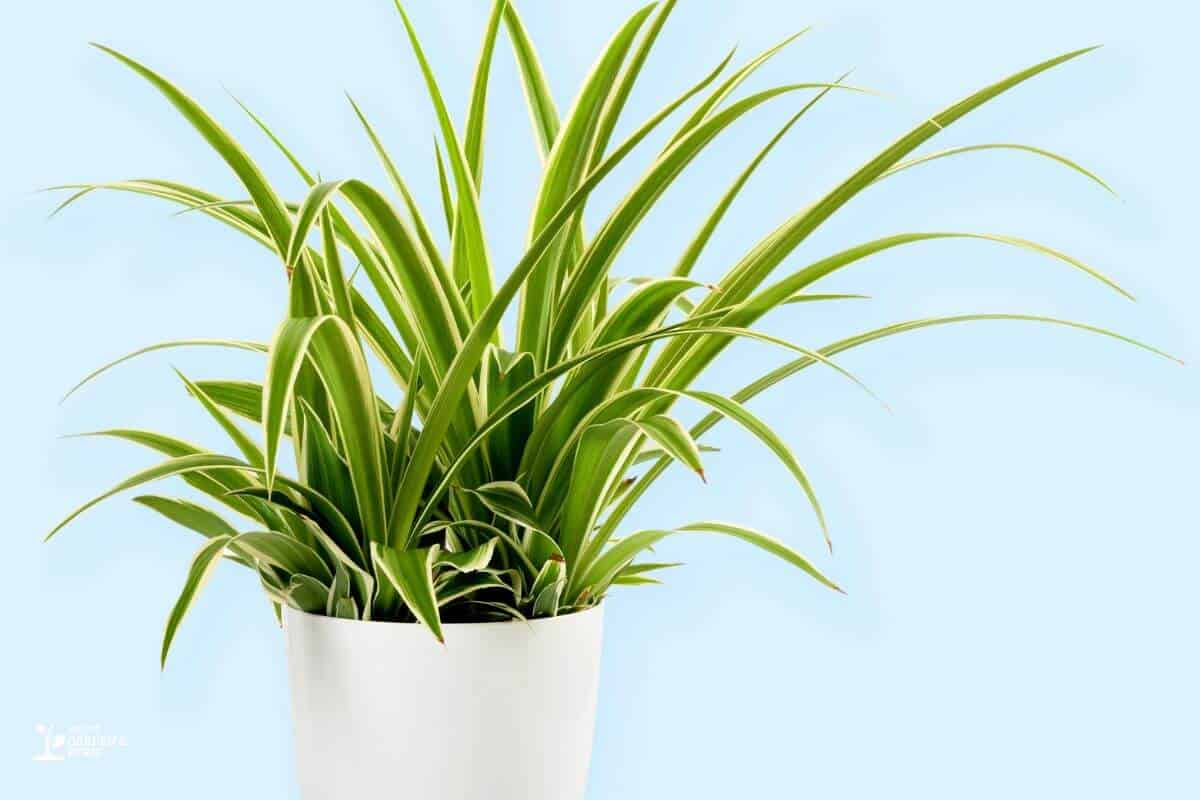
Both underwatering and overwatering can be a cause of brown tips for different reasons.
If your Spider Plant doesn’t receive enough water, the leaves will start to look limp and will eventually dry out at the tips.
To fix a lack of water, simply increase the frequency or the amount of watering, and don’t let your plant completely dry out between waterings.
A quick way to know it’s time to water is when the top two inches of the soil surface are dry soil already.
Also, make sure that the one you’re using has enough plant potting mix moisture or isn’t too fast-draining. For instance, plant soils meant for Cacti Plants aren’t suitable for Spider Plants.
4. Too Much Water
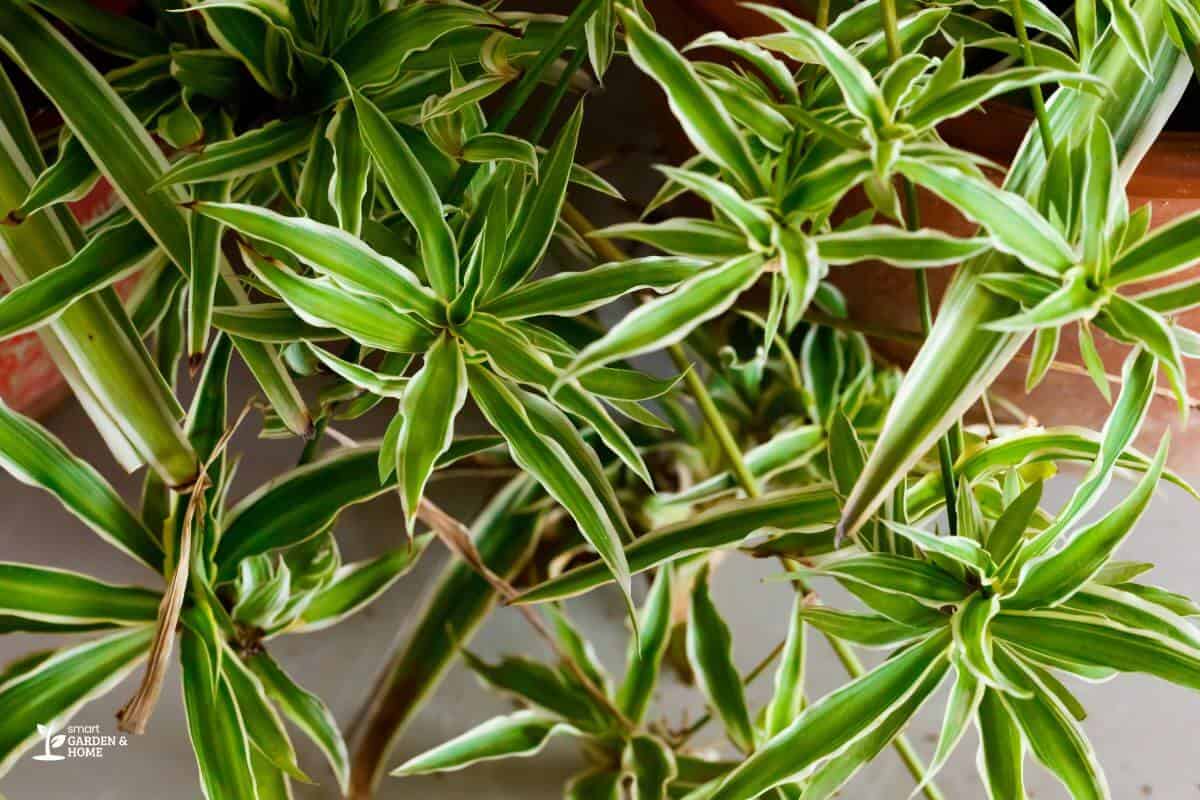
When Spider Plants are overwatered or are planted in a pot or soil that isn’t suitable for them, they can develop root rot.
This problem is caused by bacteria that are found in moist soils their ideal environment. These bacteria feed from the roots, preventing them from providing the plant with the water and nutrients it needs.
In this case, it’s a good idea to repot your plant using soil with adequate drainage or a pot with drainage holes.
When you repot, inspect the roots and remove any that are completely rotten. You should also remember to empty any excess from the saucer of water when you water your Spider Plant.
5. Too Much Fluoride in Tap Water
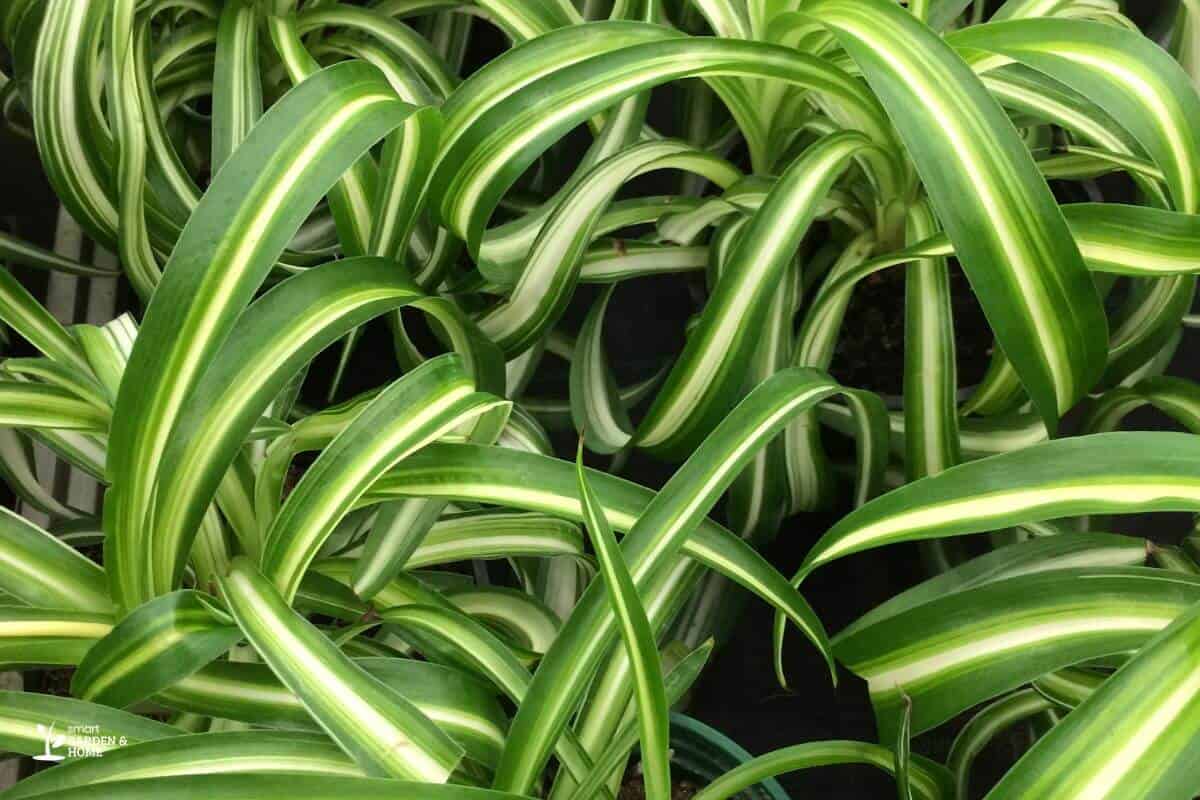
Spider Plants are one of many plant species that are sensitive to excess fluoride.
This element is often present in tap water, sometimes naturally and other times as an additive.
Unfortunately, it can be toxic for Spider Plants as it inhibits photosynthesis, so it is important to check the water quality prior to using it.
Spider Plants won’t die from an excess of fluoride from tap water, but it can cause them to develop brown tips.
If you think that’s the problem with your Spider Plants, you can flush it to remove the fluoride.
This can be done by slowly pouring a large container of rainwater or distilled water on the soil and allowing it to drain.
You should then continue using fluoride-free water such as rainwater or distilled water instead of tap water.
6. Excessive Fertilizer
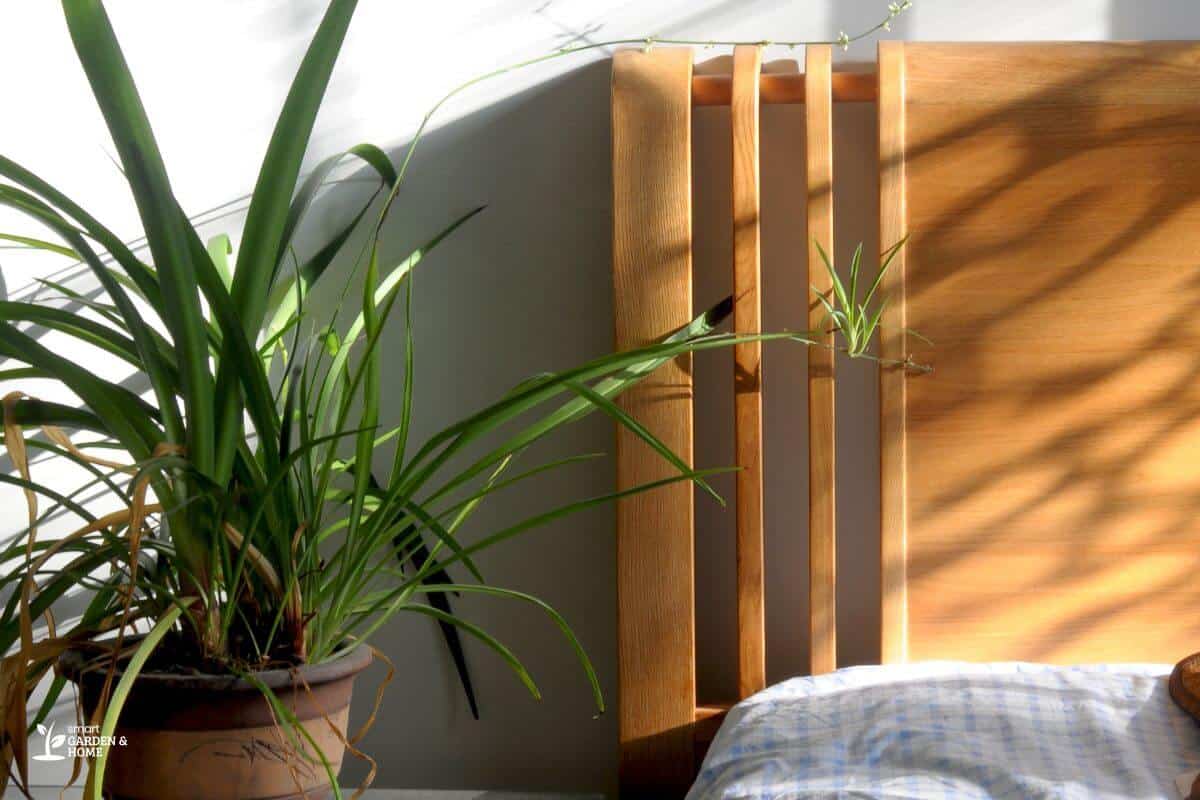
One of the most common causes of brown tips is excess fertilizer buildup.
Spider Plants don’t need many nutrients, so extra fertilizer can accumulate in the soil and damage the roots.
If fertilizer burn is the cause of the development of brown tips, you will notice white stripes or a brown-orange slimy substance on the soil.
To prevent this, make sure you only fertilize your Spider Plant during the growing season. Always use a low-strength product and follow the directions on the fertilizer label.
Avoid fertilizer altogether during the autumn and winter seasons since this is a dormant period for Spider Plants.
To fix this problem, you can flush the plant, just like you would for an excess in fluoride, or you can repot your plant, changing as much soil to fresh soil as possible.
7. Plant Diseases
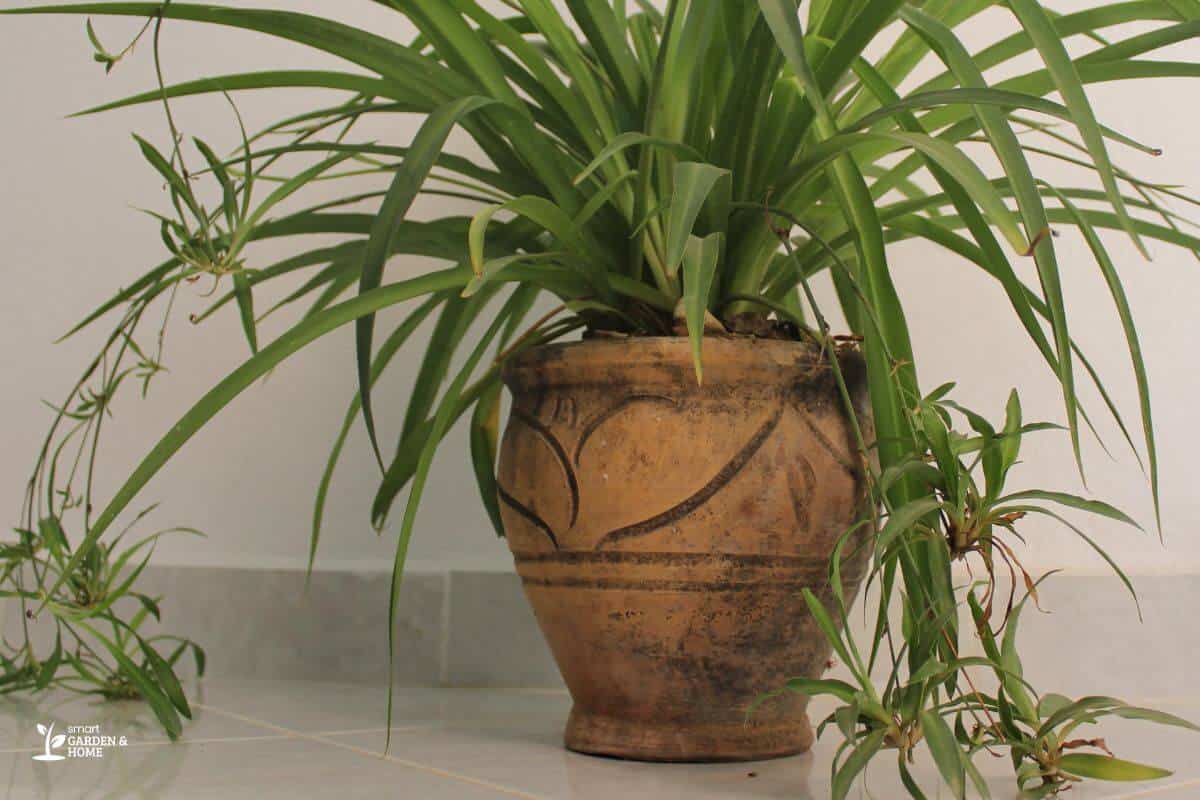
Brown or black leaves can also be caused by diseases, most commonly Bacterial Leaf Blight.
You can tell this apart from other causes because the tips will start showing light spots which will then turn dark brown or black.
The bacteria can spread to the rest of the plant and once they affect the stems, they will eventually cause the plant to die.
The only way to deal with Bacterial Leaf Spot is to catch it early on and remove the infected leaves with sharp scissors before the disease can spread.
It can be prevented by avoiding overly hot and humid conditions and by watering without getting the leaves wet.
Final Thoughts on Spider Plants Brown Tips
It’s essential to properly care for your Spider Plants to prevent brown tips from developing.
Pay attention to the plant’s watering needs, ensure it has proper drainage, and adjust the lighting to avoid direct sun exposure for an extended period of time.
Cut off any brown tips promptly to maintain the health and appearance of your Spider Plant.
By following these simple steps, you can enjoy the benefits of this beautiful and low-maintenance plant for years to come!
Keep your Spider Plant thriving, even in challenging conditions like low light or dry winter air!
So, let’s get started with your indoor Spider Plant care routine today, and witness the natural beauty and freshness that this plant’s healthy foliage can bring to your home or office space!
Take a look at these interesting reads to learn more about Spider Plants:
- Spider Plant Pale Green
- Spider Plant Leaves Curling In
- Disadvantages of Spider Plant
- What Do Spider Plant Roots Look Like
- Spider Plant Falling Over
Sources:

